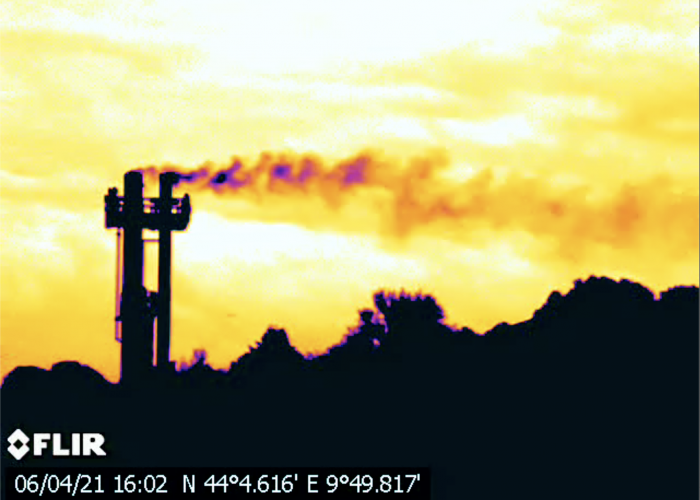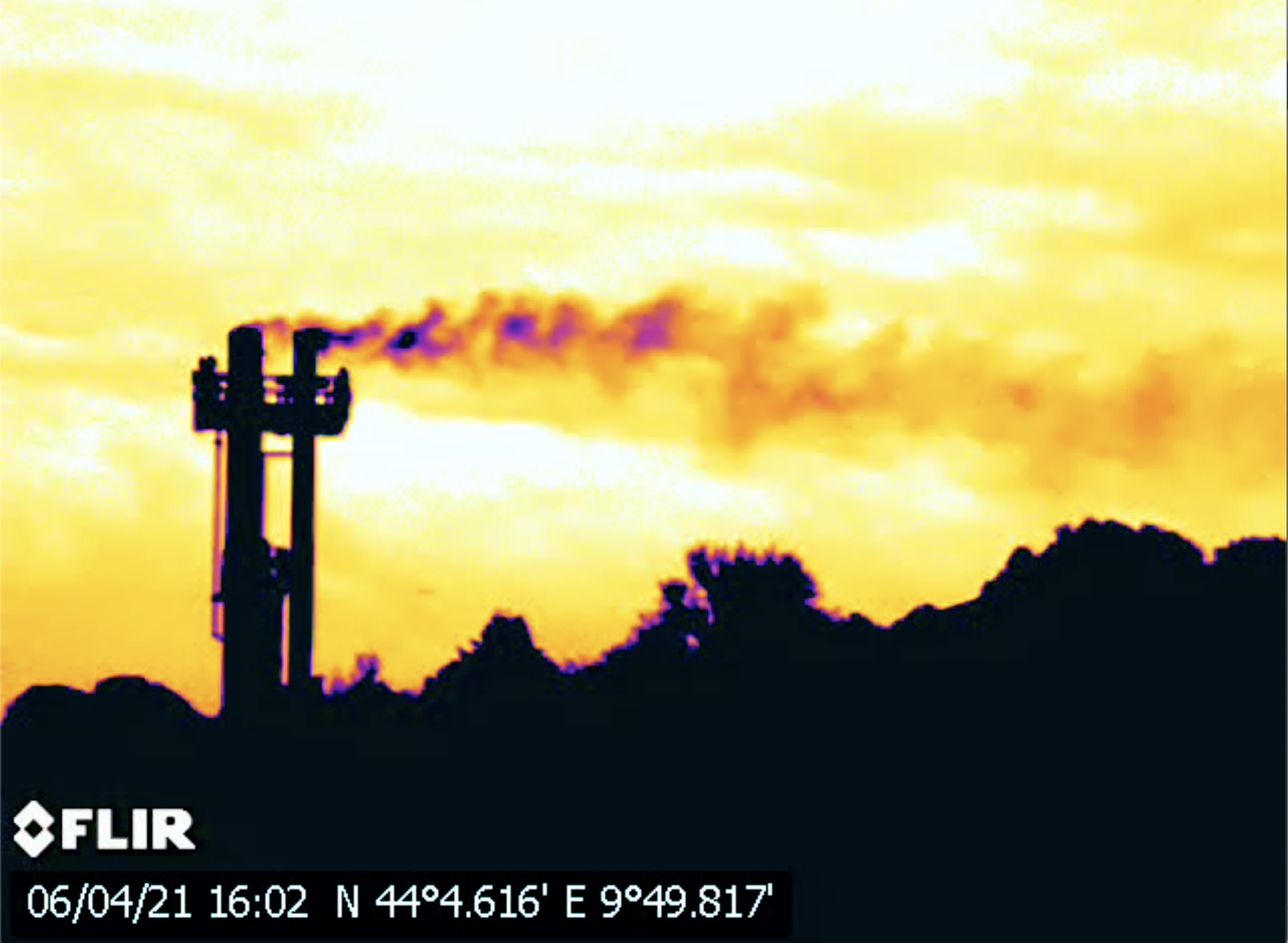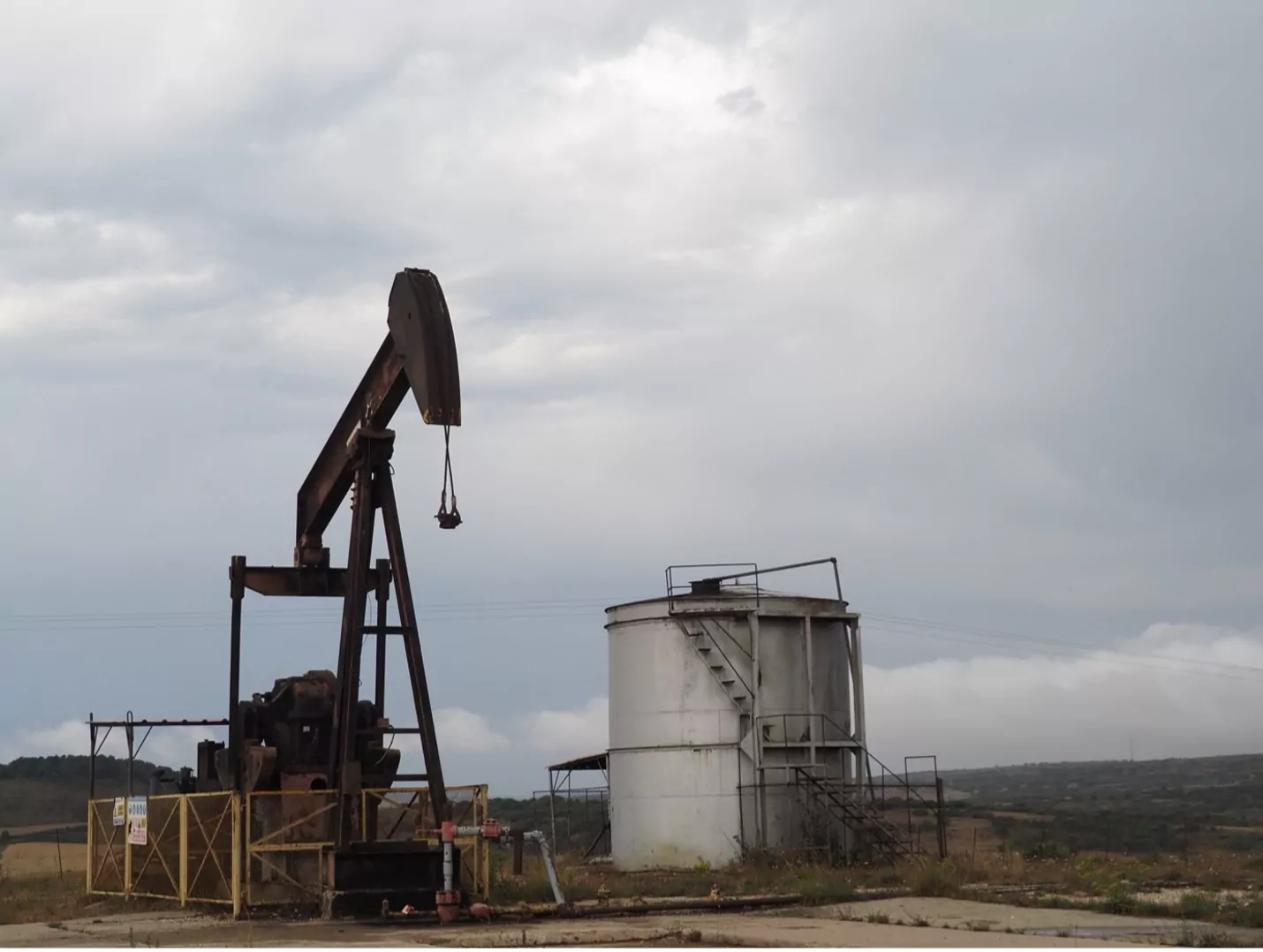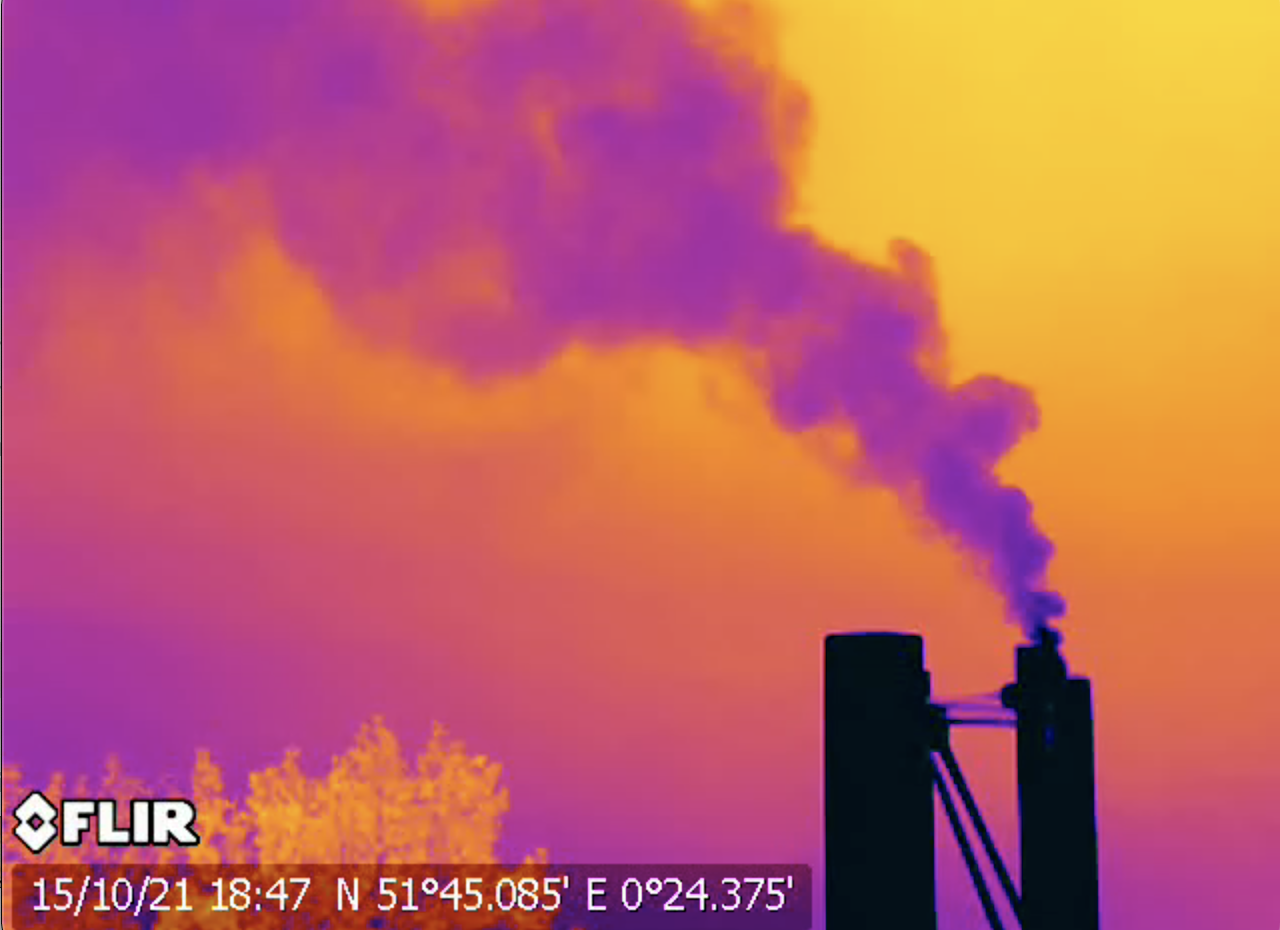In 2021, Clean Air Task Force has inspected more than 250 oil and gas facilities in 11 countries with a special infrared camera designed to detect methane emissions. This report provides an overview of all our findings. In total, we documented a shocking 433 methane emitting sources across Europe’s oil and gas network. Our new EU methane report has all the details.
After many years of slipping under the radar, the crisis of methane pollution is finally becoming a climate priority. Recent studies by the International Energy Agency (IEA), the United Nations Environment Programme, and the Intergovernmental Panel on Climate Change have highlighted the impact of methane pollution and the need to drastically reduce energy-related methane emissions by the end of this decade to keep international climate goals in reach. Most recently at COP26, more than 100 countries publicly committed to reducing global methane emissions by 2030.
“Cutting methane emissions is the best way to substantially reduce warming in the next two decades,” said Jonathan Banks, CATF’s International Director, Super Pollutants. “The quickest, easiest and cheapest way to make headway is by cleaning up the oil and gas sector. It’s not rocket science; it’s basically just plumbing.”
Methane pollution predominantly comes from three sectors – energy, waste and agriculture. While all three will need intervention, targeting cuts in the energy sector is rapidly rising up the policy agenda. That is because the majority of currently available solutions could be implemented easily and at a low cost. The IEA estimates fossil fuel operators could achieve 75% reductions with existing technologies, and 40% of those would come at zero net cost. This is the low hanging fruit of climate policy.
In 2020, the European Union began a multi-year process to develop legislation aimed at reducing methane emissions from the oil and gas industry and other sectors by announcing its Methane Strategy. Currently, there is no EU-wide policy to reduce methane emissions and many member states lack detailed domestic legislation. Limited regulatory standards and lack of coordination results in a lack of consistency in operational practices to address venting, flaring, and fugitive emissions across member states.
In this new report, CATF outlines our observations of methane pollution from oil and gas infrastructure within the EU. This report is based on trips to over 250 oil and gas sites spread across 11 member states between February and September 2021, utilizing special optical gas imaging technology that allows us to make invisible methane pollution visible. This is the first multi-country survey of oil and gas facilities in Europe, and the takeaway is clear: methane pollution is widespread.
This is a problem across the entire oil and gas value chain: from upstream, to transportation and storage, up to the point of distribution to the consumers. Our documentation shows emissions at every stage, including in areas near population centres. In total, we observed 433 sources of emissions. The emissions we observed predominantly came from storage tanks, emergency relief stacks, unlit flares, and other miscellaneous leaks from piping equipment. We also observed various types of failures resulting in methane pollution directly from the wellhead in three oil and gas producing countries (Austria, the Netherlands, and Romania), with Romania illustrating a significant problem.
“Everywhere we point this camera, we find evidence of methane pollution – it doesn’t matter which country or which part of the oil and gas network it is,” said James Turitto, CATF’s Campaign Manager, Super Pollutants. “When we first started raising this issue in Europe, we were repeatedly told that this was not a problem here. Nobody can reasonably claim that now.”
While several of the oil and gas operators that own these assets are part of Oil and Gas Methane Partnership and/or have made commitments to address methane pollution, rhetoric does not always match action on the ground. Currently, companies can self-report methane emissions, but there is no clear legal obligation to reduce emissions. EU oil and gas companies often deflect responsibility by raising the issue of methane emissions from global oil and gas producers and exporters. While methane released from oil and gas imported by Europe is a major problem, and one that must be addressed by a strong import standard, the industry will not address problems within the EU at anywhere near the scale that is necessary if there is no policy framework to compel them, nor can the EU impose standards on imported fuels if it fails to impose domestic measures.
We are in a race to pass smart policy, push companies to implement it, and build regulatory institutions that can enforce the rules.
- Upcoming EU legislation must set up a comprehensive Leak Detection and Repair (LDAR) program – which would take little time to implement and would be extremely cost-effective. Strict deadlines to enact this program will be crucial to ensure accountability and quick action. The EU must also set up and implement a robust and accurate system for monitoring, reporting, and verification (MRV) of methane emissions.
- The prevalence of venting shows the need to implement a ban on routine venting and flaring, with very limited exceptions – only for safety reasons, emergencies, or circumstances where capture for sale and reinjection would not be technically possible or extraordinarily costly. This is an urgent measure that would drastically reduce emissions and improve air quality.
- In addition, the EU should establish a separate program on methane mitigation for abandoned oil and gas wells to ensure they are found, properly plugged, and remediated. Such a program could lead to substantial reductions in methane emissions from abandoned wells as well as employment opportunities.
The forthcoming EU Methane Legislation represents a major opportunity to set the world on a path towards deep and rapid methane reductions. The evidence collected within the EU in 2020 only add more impetus to the policy agenda. As one of the architects of the Global Methane Pledge, comprehensive action to clean up domestic methane emissions by 2030 will be a good start and help to provide a playbook for dozens of countries around the world. The EU can become a global leader on this issue by pioneering import standards on top of those domestic measures.






